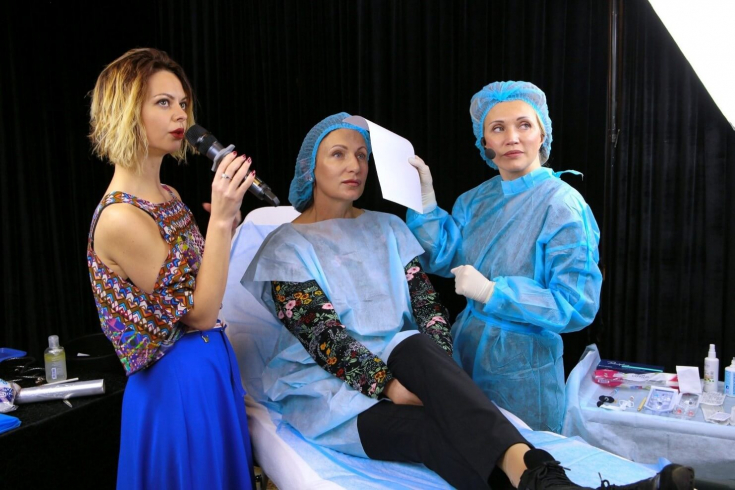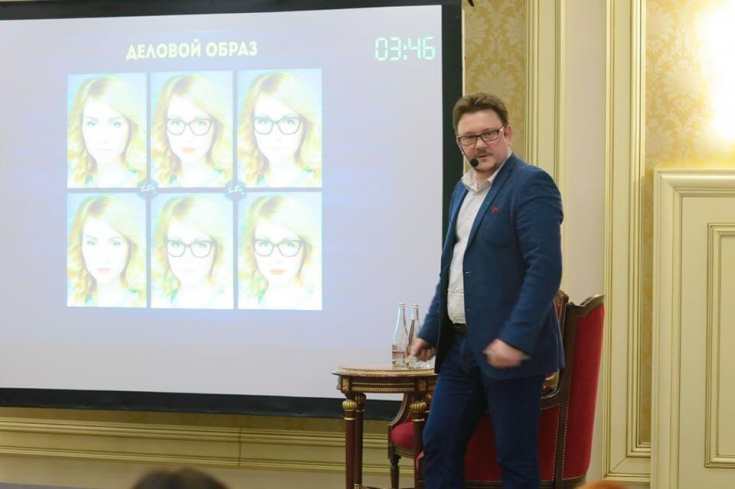Portrait of a Difficult Patient — this is a cycle of scientific and practical conferences that highlights important aspects of working with patients in aesthetic medicine with autoimmune and somatic pathology, in the perimenopausal period and androgen deficiency, as well as with sexual dysfunction.
This year the main idea of the event was:
- illumination of the psycho-emotional component associated with a change in appearance;
- perception of your new image;
- the influence of appearance on character traits.
For more information about the theoretical basis of the event, as well as transfacing techniques in the field of aesthetic medicine, read in an exclusive interview on estet-portal.
- The concept and theoretical foundations of transfacing
- Necessity of transfacing elements in the field of aesthetic medicine
- Possibilities of a cosmetologist when using transfacing elementsa
V.A.: Transfacing — awareness and transformation of character through the structures of the face, in order to build effective communications and achieve the best results.
This is ascientific-practical method of studying character through facial and body structures based on:
- principles of fractal geometry;
- psychogeometry;
- Geon perception systems.
Why transfacing?
"TransFacing" — it is a system that reveals the qualities of character by the structures of the face for further awareness and transformation of oneself, in order to achieve the best results.
The author of the system isLeonid Zolin. Considering that at the moment aesthetic medicine is developing by leaps and bounds and what was previously only subject to plastic surgeons can be performed by a dermatocosmetologist, this topic is becoming quite relevant in medicine.
This is due to the fact that along with the correction of facial features, the doctor also influences the character of the patient.For example, making more expressive cheekbones, we add confidence and determination to the patient, or plump lips
s can make a girl softer and more flexible in communication.
Necessity of using transfacing elements in the field of aesthetic medicineV.A.: The psychological status of a patient in aesthetic medicine is given one of the main places.
His inner spiritual comfort is extremely significant, which confirms the opinion about a morehigher effect of treatment, when it is not limited only to the medical aspect, but makes the person and his individual personality traits the center of attention.
Manydefects of the face and body (acne, congenital pathology, fading facial skin, post-traumatic defects) cause not only physical but also severe psychological trauma, and often lead to neurosis, anxiety disorders and depression .

event "Portrait of a Difficult Patient", allows the doctor not only to evaluate the external data of the patient and the manifestations of various not only dermatological, but also somatic pathologies, as well as determine correctly the psychological status, expectationsI that the patient has from a particular procedure.
Possibilities of a cosmetologist when using transfacing elementsV.A.: The face is a wonderful social interface, which is positioned so that all its parameters can be seen during the communication process.
For example,"kind", roundish person has nothing to do with directive management, and the person does not understand why employees do not listen to him, and partners do not believe.

"triangle" in the chin is associated with purposefulness, adherence to principles and creativity in action.
Psychogeometry underlies the unconscious perception of the forms of the surrounding world. This principle is inherent in us from the very beginning, and we cannot refuse it.
The TransFacing system was created to:
- self-awareness and transformation to achieve the best results;
- determining the character of a person and predicting his behavior;
- activation of leadership and managerial competencies through awareness of one's strengths and weaknesses of character.
transformational physiognomy.
Because thanks toappearance correction tools – it is the doctor and the beauty master who have the opportunity to directly influence the perception of a person by other people.







Add a comment